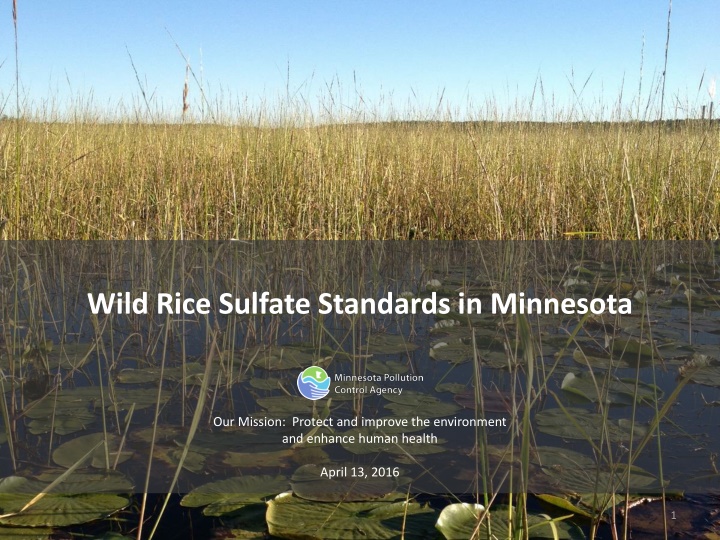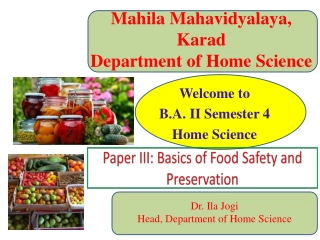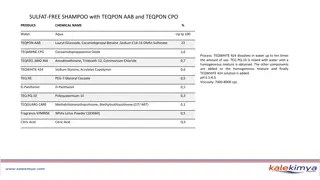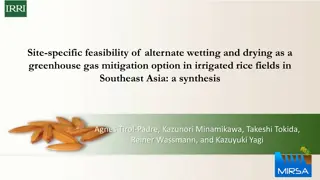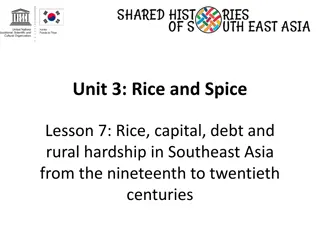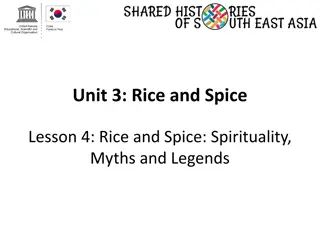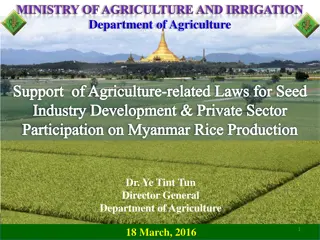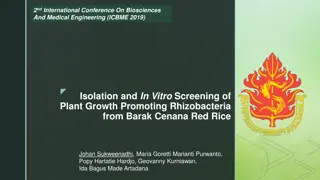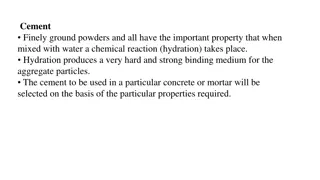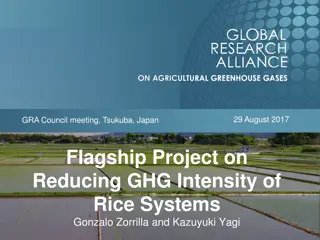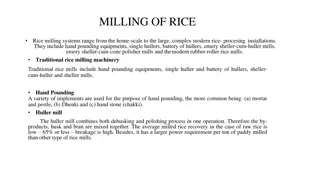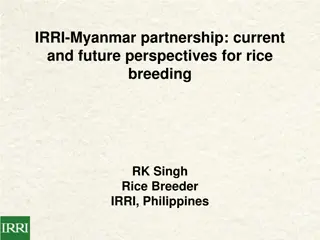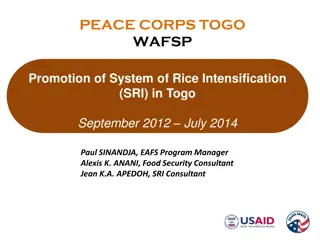Protecting Wild Rice in Minnesota: Sulfate Standards and Environmental Preservation
Understanding the importance of safeguarding wild rice in Minnesota due to its cultural, spiritual, and economic significance along with its sensitivity to sulfate pollution. Exploring sources of sulfate, the sulfate-sulfide relationship, and proposed solutions for maintaining wild rice populations. Learn more about Minnesota's wild rice sulfate standard at www.pca.state.mn.us/wildrice.
Download Presentation

Please find below an Image/Link to download the presentation.
The content on the website is provided AS IS for your information and personal use only. It may not be sold, licensed, or shared on other websites without obtaining consent from the author.If you encounter any issues during the download, it is possible that the publisher has removed the file from their server.
You are allowed to download the files provided on this website for personal or commercial use, subject to the condition that they are used lawfully. All files are the property of their respective owners.
The content on the website is provided AS IS for your information and personal use only. It may not be sold, licensed, or shared on other websites without obtaining consent from the author.
E N D
Presentation Transcript
Wild Rice Sulfate Standards in Minnesota Our Mission: Protect and improve the environment and enhance human health April 13, 2016 1
Why is it important to protect wild rice? Cultural spiritual, economic significance Minnesota s state grain Sensitive to sulfate
Sources of sulfate in wild rice waters Natural sources: driven by geology Can be elevated due to: Sulfate-rich source waters Runoff Industrial processes Municipal wastewater Concentration by water treatment 4
The sulfate-sulfide relationship depends on iron and organic carbon
State statute protects wild rice waters Self-perpetuating population Wild rice currently present, or has been present since 1975 8,000 stems over the surface of a lake, wetland, or reservoir 800 stems over a river-mile reach
Minnesotas taconite industry and the sulfate standard 8
Proposed solution: a variable sulfate standard Sulfate = 0.0000136 x Organic Carbon-1.410 x Iron1.956 9
Learn more about Minnesotas wild rice sulfate standard: www.pca.state.mn.us/wildrice
